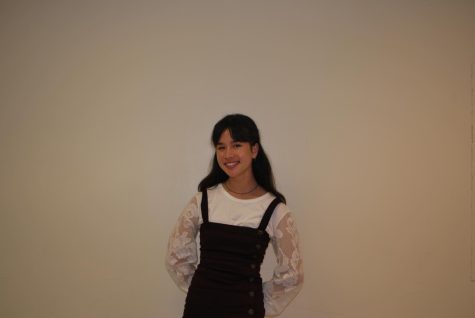Little Lions wraps up year
Students teach fall session to preschool children
December 12, 2022
Fully potty-trained children from the ages of 3 to 5 currently have the opportunity to begin their first years in education at LT’s Little Lions Preschool, taught by students in the Child Development I and II elective classes. These electives are open to any student interested to learn about infancy or teach developmentally appropriate lessons. Ending the fall session on Dec. 20, this nine-week preschool lab–available to take for both upper and underclassmen–aims to inspire future teachers, Molly James ‘25 said.
“I always have loved working with kids,” she said. “They’re always excited to tell random stories and to just be [in class].”
Although the fall preschool’s duration–two times per week for 10 weeks at NC–will be concluding on Dec. 20, the spring session will begin accepting enrollments in mid-March. The spring session offers the same educational opportunities and structure as the fall session.
For roughly 20 years, child development teacher Dawn Saukstelis has discovered that her hands-on teaching style helps students learn through real-world situations, she said.
“Personally, my favorite thing was when my daughter was preschool age and was able to come to our preschool,” Saukstelis said. “Several teachers have brought their children to Little Lions over the years; I truly do have the best job in the building.”
Both campuses offer Child Development I, where half of the course has students plan and teach a child two days a week. After taking this, students can learn more about all areas of development–physical, emotional, social, and intellectual–in Child Development II while still teaching preschool toddlers. Both center around the time period from post-birth development until the years of preschool.
“It’s been such a fun experience,” James said. “I could see myself maybe teaching [in the future] because it’s made me realize how much I enjoy it and working with young children.”
On a two-day rotation, the class is divided into four separate groups that rotate through different activities: planning lessons, teaching, observing, and coursework. Specifically, during the teaching rotation is when two different lessons are taught by high school students–along with a class song, the pledge, the calendar, and a discussion of the daily weather. Unique to this class, in particular, is the wide variety of ages in one classroom, with a disparity between toddlers and teenage adolescents, Saukstelis said.
“It’s an interesting class environment because we have high school students and preschoolers at the same time,” she said. “So unlike other teachers who can focus all of their attention on their high school students, my attention has to be on both groups.”
Besides the note-taking aspect of both child development courses, Saukstelis is passionate when observing student improvement through days of education experience and identifying their own teaching style, she said.
“I love seeing how the high school students grow over the course of teaching the preschool,” she said. “I’ve seen students who are anxious and nervous to teach the first time open up and lose their nervousness, becoming wonderful teachers.”





















![Movie poster for '[Rec]" (2007).](https://www.lionnewspaper.com/wp-content/uploads/2023/04/rec-640x900.jpg)


